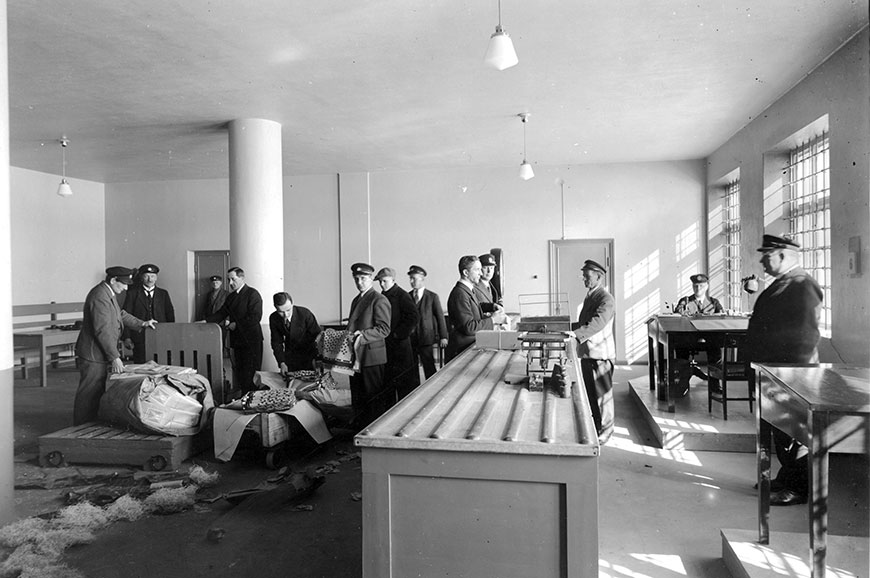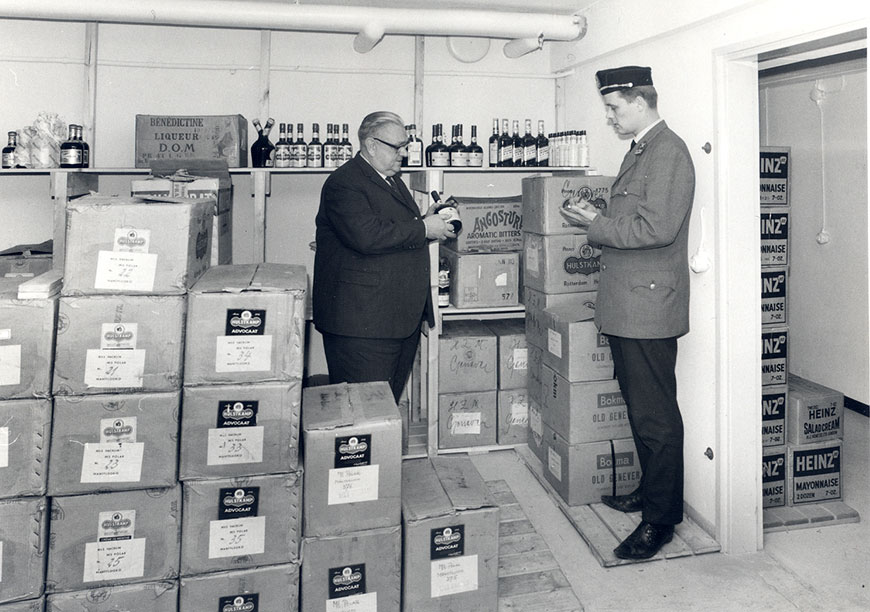History of Finnish Customs: Customs duties and
For hundreds of years, customs clearance was based on a customs tariff that defined payments for every category of goods. After the Second World War, Finland took on value-based customs clearance in accordance with international practice. Customs clearance was based on the selling price paid for the goods.
Other taxes could also be levied in connection with customs clearance. When customs fees were lowered in the mid-1800s, Customs was assigned the task of levying also other taxes, such as tobacco duty. In 1919, a new excise duty on tobacco was introduced. For this purpose, an excise duty office was established at the Finnish Board of Customs. In the 1920s, an excise duty was imposed on matches and sweets, and in the 1930s, on cattle feed and margarine. Officials at customs houses supervised excise duties in addition to carrying out their other tasks.
In early 1937, the Finnish Excise Duty Office became an independent authority to whom the levy of all excise duties was transferred from Customs. Soon after, new excise duties on tyres, coffee, sugar and other goods were introduced. Customs was still entitled to levy those excise duties in connection with customs clearance. Starting from 1941, Customs also levied turnover tax on goods cleared for entry into Finland.
For a long time, import cars were subject to regulation. De-regulation began with the car tax of 1958 which was levied in connection with customs clearance. In 1967, the car tax became permanent. Since the 1950s, fuel tax emerged as an increasingly important excise duty.
As all customs duties were lowered in the 1960s, excise taxation was once again transferred to Customs starting from early 1970. In the 1980s, customs legislation and the various types of excise duties were combined into a single entirety.
When Finland became an EU member, several excise duties became a thing of the past. The EU levied harmonised excise duties on tobacco, alcohol and fuels. This meant that the duties were to be levied in a uniform way, even though their amounts varied. In 1994, the turnover tax was replaced by the value added tax. The levying of value added tax in connection with customs clearance became a Customs task. In the early 2000s, Customs began the preparation of the electronic levying of excise duties.
After Finland entered the EU, the most controversial tax was the car tax, which Customs continued to levy in 1995 as a post-registration tax which was still based on goods. A decision by the Court of Justice of the European Communities in 2001 brought about significant changes which meant a great deal of work for Customs.
In the 2000s and 2010s, Customs levied about a third of Finland’s state revenue on an annual basis. In 2015, the Finnish Government decided that the levying of car tax, excise duties, and value added tax on non-EU imports was to be transferred from Customs to the Tax Administration. As of 1 January 2017, the Tax Administration is responsible for car taxation and excise taxation.

